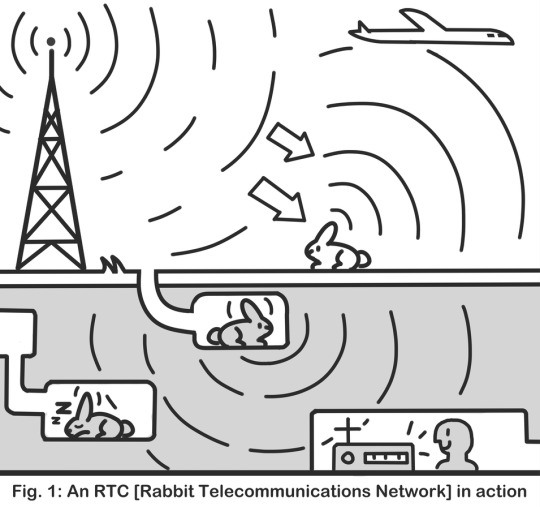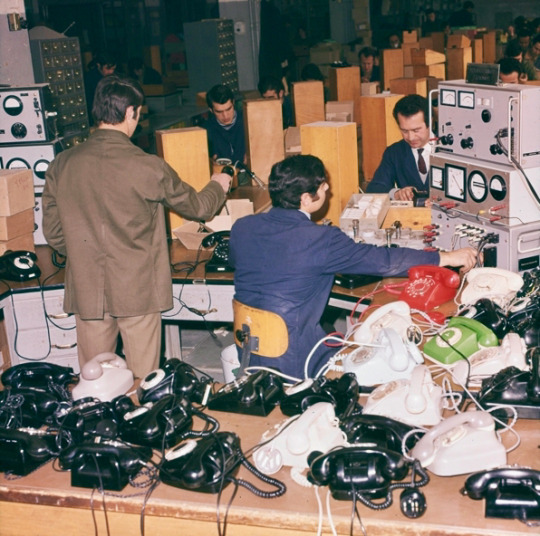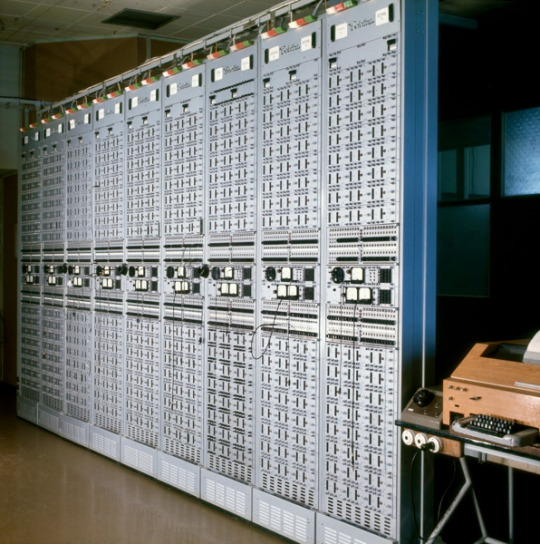#IT and telecommunication
Explore tagged Tumblr posts
Text
Starting a collection













If you have more I'd love to see them this is my favorite meme format ever
#the flavorful garlic#the despicable mold spore#the humble cheerio#the humble crowbar#the abundant carbon dioxide molecule#the humble brick#the apostrophe#the trustworthy telecommunications dish#the nefarious leech#the nefarious anglerfish#the perfidious pollen particle#the notorious neutrino#the delicious and nutritious peeled banana
41K notes
·
View notes
Text








Compilation of pictures of these Angelic Beasts that ive taken in case someone cares
#i do like to take photos#ive never posted them here though#photography#telecommunications#cell tower#cell towers#telecom tower#my art
1K notes
·
View notes
Text

a textbook diagram demonstrating an RTC (rabbit telecommunications network)
4K notes
·
View notes
Text

AT&T/Bell Telephone Company employment opportunity ad, 1972.
#technology#telecommunications#advertisement#AT&T#Bell Telephone Company#Alana MacFarlane#San Rafael#California#USA#1972
4K notes
·
View notes
Text










Telecommunications in Greece, 1970-1979.
(OTE Museum of Telecommunications)
2K notes
·
View notes
Text
Netflix Canada is done with being basic.
The streaming giant says it's phasing out the $9.99 "basic" option from its price plans, taking away the cheapest subscription without ads.
That means new Netflix subscribers will have to decide whether they're ready to sit through commercial breaks or fork out a bit more money for an ad-free experience.
Netflix's ad tier costs $5.99 and allows viewing on up to two screens at once with commercial interruptions.
The next level up is $16.49 per month to watch without ads, with simultaneous viewing on two devices. There's also the premium plan for $20.99 with 4K high-definition video and the option to add up to two members who don't live in their household.
Continue Reading.
Note from poster @el-shab-hussein: Remember what happened last time? When they cracked down on password sharing on Canada first because they use Canadians as a testing grounds for what they want to implement on bigger populations? This is going to happen to the Netflix services in other countries if they think this measure is successful. We're just consumer guinea pigs in this story.
Tagging: @politicsofcanada, @vague-humanoid
6K notes
·
View notes
Text

A phone that has push buttons instead of a dial for calling.
#phones#vintage phones#push-button phones#landlines#landline phones#bell telephone#the bell system#ma bell#telephones#vintage telephones#push-button telephones#phone technology#technology#vintage tech#telecommunications#communication#touch-tone phones#touch-tone telephones#at&t#bell telephone company#western electric#western electric model 2500 telephone#bell labs#bell telephone laboratories
145 notes
·
View notes
Text

308 notes
·
View notes
Text


Repo Man (1984)
#repo man#cult classic#science fiction#graphics design#retro computing#retro tech#old tech#1980s#80s#80s tech#scifi aesthetic#80s aesthetic#80s movies#80s films#eavesdropping#old technology#telecommunications
804 notes
·
View notes
Text

TXE1 telephone exchange test console
364 notes
·
View notes
Text

779 notes
·
View notes
Text

#book cover#cover design#architecture#infrastructure#Carlotta Darò#telecommunications#technology#electricity#power#Carlotta Daro
104 notes
·
View notes
Text
Can we normalize not calling me by nicknames? Like everyone calls me Telemarketing or Telecommunication, like come on! My name isn't that hard T.e.l.e.m.a.c.h.u.s NEXT TIME PLEASE WRITE IT THE GOOD WAY! I am gonna go CRAZY if it continues

#epic the ithaca saga#epic#epic the musical#telemachus#telegram#television#teletubbies#teleconsultation#telecommunications
129 notes
·
View notes
Text

a BNY teleco. poster!
2K notes
·
View notes
Text
Connecting the World: Telecommunications Satellites Enhance Global Communication Networks

In an increasingly interconnected world, the role of telecommunications has never been more critical. The rapid growth of digital communication technologies has significantly transformed the way we live, work, and interact with one another. At the heart of this transformation lies a technology that orbits high above us – telecommunications satellites. These sophisticated machines play a pivotal role in bridging gaps across continents, bringing people closer, and enabling the seamless exchange of information on a global scale.
Telecommunications satellites are the backbone of modern communication networks. These satellites are designed to transmit signals across vast distances, overcoming the limitations of terrestrial infrastructure. By relaying signals from one point on the Earth's surface to another, they enable instant communication, regardless of geographical barriers. This capability has revolutionized various sectors, from media broadcasting to internet services, emergency communications, and more.
The Evolution of Telecommunications Satellites
The journey of telecommunications satellites began in the mid-20th century. Early experiments with satellite communication laid the groundwork for what would become a global network. The launch of the first artificial satellite, Sputnik, in 1957 marked the dawn of the space age. However, it wasn't until the launch of the first geostationary satellite in 1965 that the true potential of satellite communication was realized. This satellite, positioned in a fixed location relative to the Earth's surface, could provide continuous coverage to a specific region, paving the way for real-time communication across the globe.
Since then, telecommunications satellites have evolved dramatically. Advances in technology have led to the development of more sophisticated satellites with greater capacity, reliability, and efficiency. Modern satellites are equipped with high-powered transponders, enabling them to handle large volumes of data transmission. These advancements have expanded the capabilities of satellite communication, making it an indispensable part of the global communication network.
How Telecommunications Satellites Work
The operation of telecommunications satellites is based on the principles of radio frequency transmission. These satellites receive signals from ground-based stations, amplify them, and retransmit them back to other ground stations. The process involves several key components:
Uplink: The transmission of signals from a ground station to the satellite. This is typically done using high-frequency radio waves.
Transponder: The component within the satellite that receives the uplink signal, amplifies it, and changes its frequency for retransmission.
Downlink: The transmission of signals from the satellite back to a ground station. This completes the communication loop, allowing the original signal to reach its intended destination.
Satellites are positioned in different orbits depending on their specific functions. Geostationary satellites, which orbit at approximately 35,786 kilometers above the equator, provide continuous coverage to specific regions. Low Earth orbit (LEO) satellites, positioned much closer to the Earth's surface, offer lower latency and are often used for services requiring real-time data transmission, such as internet connectivity.
Impact on Global Communication Networks
The impact of telecommunications satellites on global communication networks is profound. They have enabled a level of connectivity that was previously unimaginable, facilitating the seamless exchange of information across vast distances. Here are some key areas where their impact is most evident:
Media and Broadcasting
Telecommunications satellites have revolutionized the media and broadcasting industry. They enable the transmission of television and radio signals to remote and underserved areas, ensuring that people worldwide have access to information and entertainment. Live broadcasts of major events, such as sports competitions and political speeches, are made possible through satellite technology, allowing audiences to experience these moments in real time.
Internet Connectivity
In many parts of the world, terrestrial internet infrastructure is either insufficient or nonexistent. Telecommunications satellites provide a vital solution to this problem by offering internet connectivity to remote and rural areas. Satellite internet services have become increasingly popular, providing reliable and high-speed internet access to communities that were previously disconnected.
Emergency Communications
During natural disasters and emergencies, terrestrial communication networks are often disrupted. Telecommunications satellites play a crucial role in providing emergency communication services, ensuring that rescue and relief operations can be coordinated effectively. Satellite phones and portable satellite communication devices are essential tools for first responders and humanitarian organizations, enabling them to maintain communication in even the most challenging conditions.
Global Navigation Systems
Telecommunications satellites are also integral to global navigation systems. They provide the precise timing and positioning data required for navigation and location-based services. These systems are essential for various applications, including aviation, maritime, and land transportation, as well as for personal navigation devices used by millions of people worldwide.
Future Trends and Developments
The field of telecommunications satellites is continually evolving, driven by advancements in technology and increasing demand for connectivity. Several trends and developments are shaping the future of this industry:
High Throughput Satellites (HTS)
High throughput satellites represent a significant advancement in satellite technology. These satellites offer substantially increased data transmission capacity, enabling faster and more reliable communication services. HTS technology is particularly beneficial for providing broadband internet access to remote and underserved areas, helping to bridge the digital divide.
Constellations of LEO Satellites
One of the most exciting developments in satellite communication is the deployment of constellations of low Earth orbit satellites. These constellations consist of hundreds or even thousands of small satellites working together to provide global coverage. LEO constellations offer lower latency and higher data transfer rates compared to traditional geostationary satellites, making them ideal for applications such as internet of things (IoT) connectivity and real-time data services.
Advances in Satellite Manufacturing
Advances in satellite manufacturing are making it possible to produce smaller, more cost-effective satellites. These miniaturized satellites, often referred to as smallsats or cubesats, can be launched in large numbers, providing flexible and scalable communication solutions. The reduced cost of manufacturing and launching these satellites is driving innovation and enabling new players to enter the market.
Integration with Terrestrial Networks
The integration of satellite communication with terrestrial networks is another key trend. Hybrid networks that combine satellite and terrestrial technologies can offer seamless connectivity, ensuring that users have access to reliable communication services regardless of their location. This integration is particularly important for providing consistent internet coverage in areas with challenging terrain or sparse infrastructure.
Challenges and Considerations
While telecommunications satellites offer numerous benefits, there are also challenges and considerations to address. One of the primary challenges is the cost associated with launching and maintaining satellites. The development, launch, and operation of satellites require significant investment, which can be a barrier for some organizations.
Additionally, the increasing number of satellites in orbit raises concerns about space debris and collision risks. Ensuring the long-term sustainability of space activities requires careful management of satellite operations and the implementation of measures to mitigate the risk of space debris.
Conclusion
Telecommunications satellites have fundamentally transformed global communication networks, enabling instant connectivity and information exchange across vast distances. From media broadcasting and internet connectivity to emergency communications and global navigation, the impact of these satellites is far-reaching and profound.
As technology continues to advance, the future of telecommunications satellites looks promising. High throughput satellites, LEO constellations, and advancements in satellite manufacturing are set to further enhance the capabilities of satellite communication. By overcoming challenges and embracing innovation, telecommunications satellites will continue to play a crucial role in connecting the world, bridging gaps, and enabling a more connected and informed global community.
In a world where connectivity is essential, telecommunications satellites stand as a testament to human ingenuity and the relentless pursuit of progress. They embody the spirit of exploration and innovation, bringing people closer together and fostering a sense of global unity. As we look to the future, the continued evolution of telecommunications satellites promises to unlock new possibilities and drive the next wave of communication advancements.
196 notes
·
View notes
Text

Arnall gained access to Telefónica, a 65,700-square-meter data center in Alcalá, Spain that handles much of Europe’s cloud computing services. Timo Arnall
111 notes
·
View notes